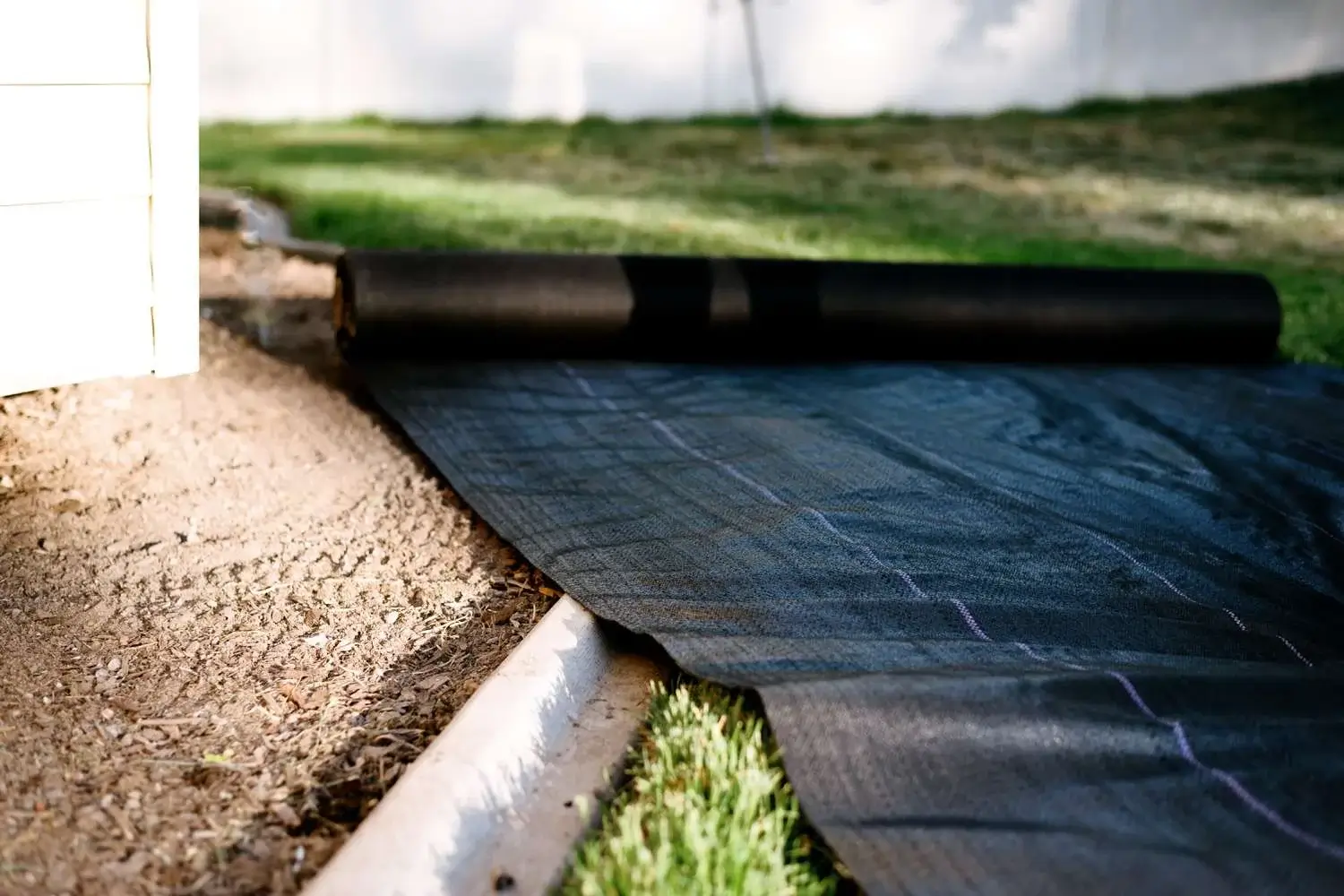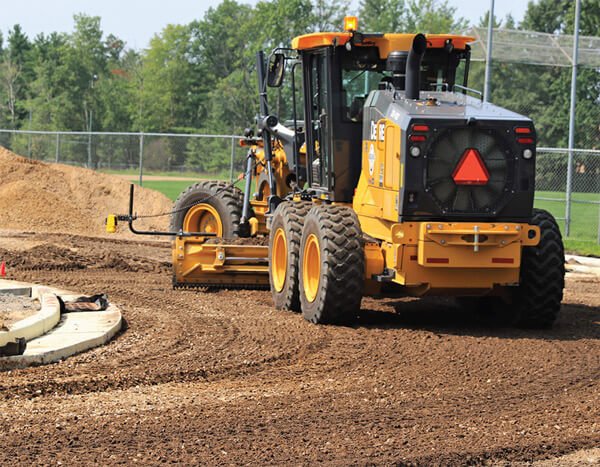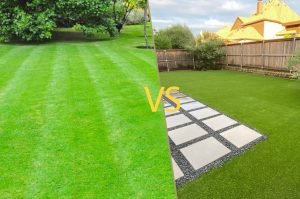Artificial grass is in style nowadays due to its manifold aesthetic and practical features. It is made of different materials, including nylon, polyethylene, and polypropylene, with different textures and colors as well. Artificial grass is an amazing alternative to natural grass for having a lawn or garden in any place.
There are different shapes and styles of this artificial turf on the market. However, the installation of artificial grass is not as simple as it seems. Follow a step-by-step procedure to accomplish this task effectively.
In this article, we will discuss the easy steps to installing artificial grass anywhere. Consider various factors before installing artificial turf. To have a natural and evergreen look, buy this grass in a green shade, and don’t forget to consider your area and the shapes for which you are buying artificial grass online. Let’s discuss the procedure for installing artificial grass.
Steps To Install Artificial Grass in Your Outdoor Places
Installing the artificial grass can take time if the area is too large. It is not impossible to do this task yourself. However, you can hire a professional to perform this task.

Tools and Equipment Required
To install artificial grass in your residential or commercial areas, you will need certain tools and equipment, including:
- Grass Cutter
- Shovel and Knife
- Joining Tape
- Measuring Tape
- Planks for Compacting
- Ground Pins or nails
- Joining Adhesive
- A hammer
- Broom or Stiff Brush
- Good-quality Gloves
Prepare the Area
To install the artificial grass, spray the areas with a weed killer first. You may need to spray with a Roundup or a similar product to kill all the grass in the area before installing the turf at the required location.
You must spray the area at least two weeks before you do this task to give it the required time to work. And kill off all the grassroots beforehand. It will help to ensure that all the existing unnecessary grass materials are dead down to the roots.
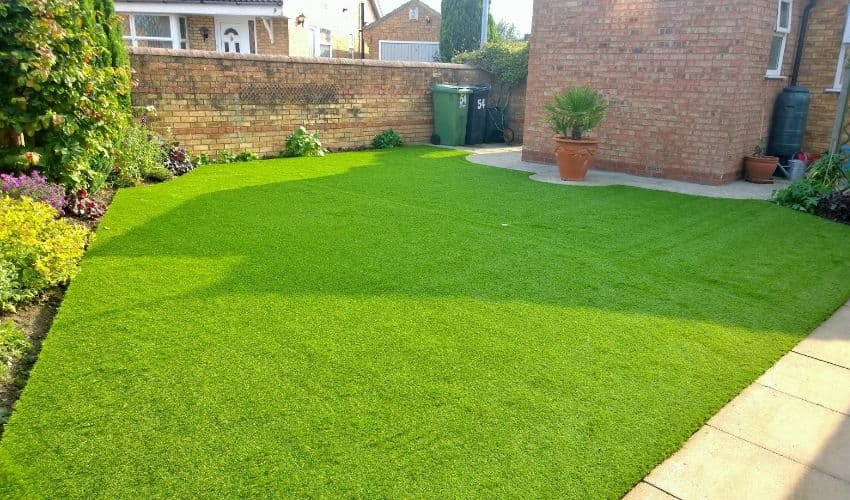
Eliminate The Top Levels Of The Soil
If you’re considering installing artificial grass over the muddy floor, then at least dig it up to the top 3 or 4 inches to create a space for laying the new base. You can use a digging tool available on the market with rotating blades to dig up the grass and break up the soil. Remove all the existing grass, or it may create an uneven surface later.
To avoid slumping, let the soil get wet from rain for a few days before you dig. The other surface area doesn’t need to be perfectly graded, or you can use a hand tamper to level up the obviously loose soil, gravel, and sand. To improve your drainage system, you should have a gradient.

4. Consider The Drainage System
Installations over well-draining soil could have a few drainage issues, as the artificial grass is permeable to water, and the entire base described below provides an additional drainage layer. And if you’re creating a lawn on a hard surface, such as concrete floors, or in poorly draining soil, you should take the following precautions:
- If there is no proper water drainage system near your area of artificial turf, then you must consider installing a system for the flow of water before proceeding further.
- If the required area only faces slight rainfall, then you can leave some drainage holes or gaps every 6 inches around the artificial turf edges.
5. Install A Border
The next step, in this case, is to install a border along the artificial turf’s edges. Using this approach can help you keep the lawn safe from slumping. You can use a plastic bender board, which is the most common method and a quite efficient option.
And if you want a more interesting option to renovate your lawn, then you can use a firm curb around the place. Make sure that the borders do not peek above the level of the grass because they can be a barrier to drainage.
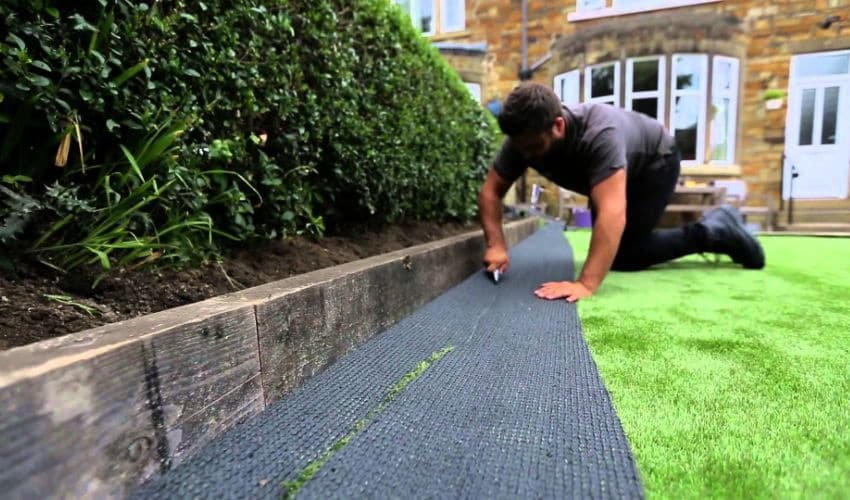
Add A Weed Barrier
Sometimes weeds start growing on this fake turf. To remove the weed from the artificial turf, you can lay out a textile barricade at the bottom of the digging area. This is an optional step, but it helps prevent insects and earthworms from digging through your artificial turf.
7. Installing The Base Material
Purchase finely crushed rock or rotten granite with particles under ⅜” (10 mm) to install the base materials. Fill the required area with this material to prevent slumping and drainage. However, fill the material to a depth of 3 to 4 inches (7.5–10 cm). You’ll need roughly one cubic yard of material for every 100 square feet of grass.
However, you can get more accurate information about the specific grass type from the company you are buying it from. If you’re installing the grass carpet over concrete or any hard surface, then a rubber shock pad can work instead.
But in another case, you can skip this step if you are sure that the concrete has a sufficient slope for drainage, and you can entirely cover the edge of the slab with the artificial grass. so that your children can play on the artificial turf with no fear of slipping and getting bruised.
Grade The Base
Use a decorating rake to smooth out the bottom material. Use a bubble level, string, and ruler to grade smooth surfaces to a 2–3% slope (a 2–3 foot drop per 100 feet), sloping down to the drainage system.
Compact & Moisturize The Base
Pour the sand lightly over the base with a garden hose to lubricate the particles and prepare for carbonation. You can use a hand tamper, plate, or roller compactor to compact the material into a sturdy base. Then try reducing its original height to almost 90% or less.
This will require several passes back and forth in the area. You can use a vibratory plate compactor, which is the most efficient solution for this purpose. These tools are easy to get hold of from any rental service. The hand tamps are the cheapest to buy permanently.
10. Cut the Turf
To install the turf, first measure the area where you are going to install it and check the width and length of the grass strips. Then, stretch out the strips of grass with the help of a person and set them down over the moistened and compacted base. Don’t drag the grass over the base of the lawn because it disturbs the smooth surface. Mostly on artificial turf, the fake grass blades bow in one direction.
Install the artificial turf in the same direction as the blades, or else it will not give a natural appearance. You can use a carpet cutter to cut the unnecessary or underside of the turf whenever required, so that it can fit perfectly into the shape of your lawn area.
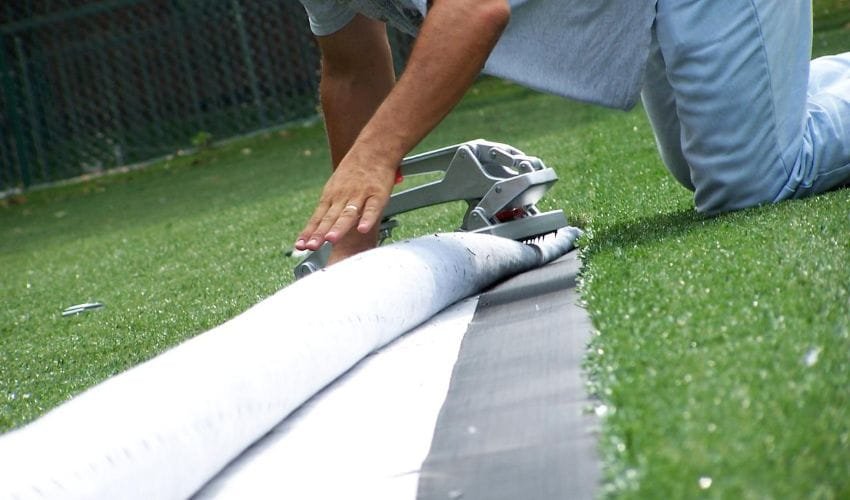
Seam The Turf Strips Together
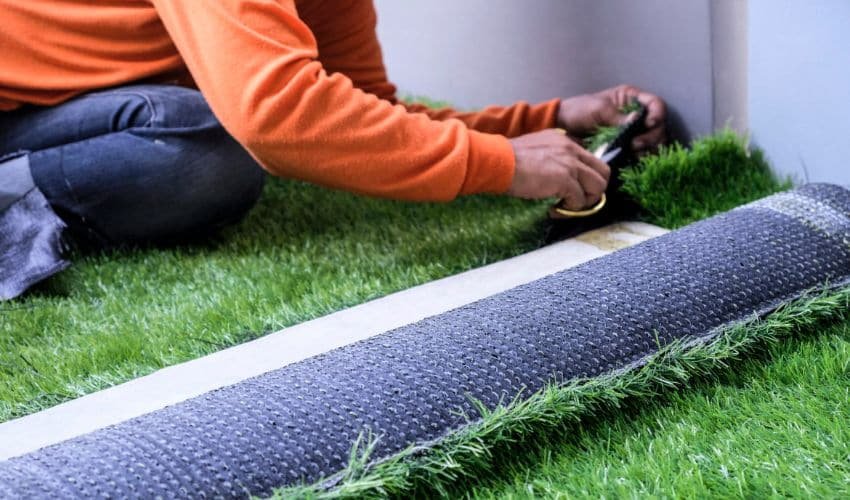
There are many ways to join two strips of turf. You can use joining tape or adhesive to join the turf strips together. To get the best results, try to purchase the tools and materials from the same company that sold you the artificial turf.
Brush The Turf & Water It
Use a power broom to vacuum your artificial grass. Brushing up the grass blades after each raking of infill material can give your lawn a tidier look. If you don’t have a power broom, then you can use a leaf blower or a stiff-bristled broom to brush and clean out the grass.
Brushing the grass will help the infill or ballast settle perfectly. Check out the material after a day to see the ultimate results. You can rake in another layer of infill if each of the grass blades is exposed and the lawn isn’t bouncy enough. Optionally, you can use a leaf blower to vacuum the dirt and debris from the surface of artificial grass.
EndNote!
Installing artificial grass is not that difficult if you follow this easy guide. You just need to gather the required tools, clear or prepare the area, and install a border, barrier, and base. Then cut the unnecessary turf after moistening the base. This guide will help a lot when installing artificial grass at your place.

